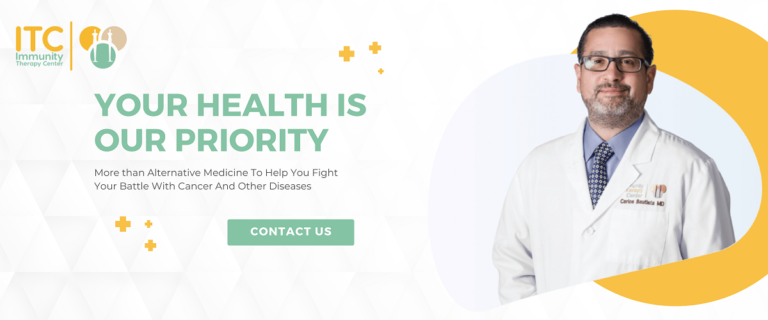hile health and wellness is essential to almost everyone, not all respond the same way to medical treatment. For this reason, alternative cancer treatments have gained significant attention for their holistic and natural approach to healing. With growing interest in moving beyond conventional methods, individuals are seeking the best alternative cancer treatment centers that offer a range of effective and successful therapies.
Understanding Alternative Cancer Treatments
Why consider alternative cancer treatments? This type of treatment embodies a philosophy that focuses on healing the whole person rather than solely targeting the disease. While conventional treatment has its merits, alternative approaches offer additional perspectives, emphasizing the importance of the individual’s overall well-being. By addressing the root causes of cancer and employing natural therapies, alternative treatments seek to enhance the body’s innate healing abilities.
The Most Successful Alternative Cancer Treatments
So, what can you expect from an alternative cancer treatment center? The most successful alternative cancer therapy programs typically combine several of the following alternative treatments:
- Biomagnetic Therapy: This therapy uses magnets of varying strengths to target and eliminate cancer cells by creating an unfavorable environment for their growth.
- Cryoablation Therapy: So, how is cryoablation performed? This therapy uses freezing temperatures to destroy cancer cells, which is particularly effective for localized tumors.
- DMSO Potentiation Therapy (DPT): This therapy involves having dimethyl sulfoxide (DMSO) administered to enhance the effectiveness of chemotherapy drugs and make cancer cells more vulnerable to treatment. Utilizing DMSO for cancer treatment in this manner can be a strategic tool in the fight against cancer.
- Enzymatic Cancer Therapy: Involves using enzymes to help break down the protective coating of cancer cells and make them more susceptible to both the immune system and other treatments.
- HALO Therapy/Biophotonic Light Therapy: This therapy involves using specific light wavelengths to stimulate the immune system and target cancer cells.
- Hyperthermia: Hyperthermia therapy raises the temperature of the body or targeted areas to damage and kill cancer cells, often used alongside other treatments.
- Immunotherapy: Immunotherapy for cancer treatment aims to enhance the body’s immune system to recognize and attack cancer cells. It involves using anti-cancer vaccines, cell therapy, and Leukocytes Activated by Interleukin (LAK).
- Insulin Potentiation Therapy (IPT): IPT utilizes insulin to enhance the uptake of chemotherapy drugs by cancer cells, potentially reducing the dosage needed and minimizing side effects.
- Intraperitoneal Perfusion Hyperthermia: This therapy involves delivering heated chemotherapy directly into the abdominal cavity to target cancer cells in that area.
- Intravenous Curcumin: Curcumin is a compound found in turmeric that has anti-cancer properties and helps reduce inflammation when introduced intravenously.
- Intravenous Solutions: Customized IV Therapy, DMSO, and Hydrogen Peroxide are used to deliver customized solutions to support the immune system and provide necessary nutrients.
- Laser Cancer Treatment: What are the benefits of laser therapy? Laser treatment for skin cancer uses high-intensity light to destroy cancer cells or shrink tumors, often used for superficial or early-stage cancers.
- Mag Ray: Mag Ray therapy utilizes magnetic resonance to target and destroy cancer cells while minimizing damage to healthy tissues.
- Oxygen Therapies: What are the benefits of oxygen therapy? This therapy involves using Hydrogen Peroxide, Ozone, and UVB therapies to kill cancer cells and improve overall cellular health.
- Peptide Cancer Treatment: Small proteins that can be used to target specific cancer cells and inhibit their growth.
- Phenyl Butyrate IV: Phenyl Butyrate is administered intravenously to inhibit cancer cell growth and promote differentiation.
- Pulsed Electromagnetic Field Therapy: This therapy utilizes electromagnetic fields to stimulate healthy cell function and inhibit cancer cell growth.
- Radiofrequency Ablation: In this procedure, high-frequency electrical currents are used to generate heat and destroy cancer cells, particularly effective for solid tumors.
- Rife Machine Therapy: Rife machines for cancer deliver electromagnetic frequencies to target and eliminate cancer cells.
- Salinomycin IV: Salinomycin is an antibiotic that has shown potential in inhibiting cancer stem cells and reducing tumor growth.
- Sono Dynamic Therapy: This therapy combines ultrasound and a photosensitizing agent to selectively destroy cancer cells.
- Viral Anticancer Vaccine Therapy: Vaccines are developed using viruses modified to target and kill cancer cells, stimulating the immune system’s response.
- Vitamin and Mineral Dietary Supplementation: Certain vitamins and minerals, such as vitamin C, D, and selenium, are supplemented to support the immune system and overall health.
These alternatives to chemo for breast cancer and other forms of cancer offer a range of options for individuals seeking holistic and natural approaches to cancer care.
Finding an Alternative Cancer Treatment Center
Across the globe, numerous natural cancer treatment centers have emerged, offering innovative and successful therapies.
One such place favored by many is Immunity Therapy Center in Tijuana, Mexico.
ITC uses the most effective alternative treatments, focusing on immunotherapy and personalized treatment plans. Our integrative approach includes immunotherapy, hyperthermia, vitamin and nutrient therapies, and mind-body support to boost the immune system and target cancer cells. We continue to achieve significant success in helping individuals with various types of cancer like brain cancer, improve their quality of life and extend their survival.
Success Stories and Testimonials
The power of skin cancer alternative treatment and other alternative therapies for different forms of cancer lies in the transformative journeys of individuals who have experienced remarkable healing. Just hear what our patients have to say:
“The treatments here were very simple, very painless, amazingly simple and effective. Within a week I was starting to walk back and forth from the hotel. I was able to have conversations. I was feeling better and eating—I couldn’t remember the last time I had eaten. I started to enjoy myself and started having a life with my wife again. We felt like we’re on a vacation.”
~ Peter Rivas, who was diagnosed to have one large tumor and two smaller tumors but after 8 weeks of alternative treatment is now only dealing with the original tumor that has also since shrunk substantially.
“These treatments work… it’s a different way of looking at it, but it works.”
~ Maria Petulla, a woman diagnosed with Stage 4 breast cancer but has since had her cancer markers gor from over 3,000 to less than 500 since receiving alternative treatment.
“I feel that everyone should do these types of therapies because we all produce cancer cells everyday. These therapies keep your immune system strong and your body detoxed. You get these diagnoses and get scared. I encourage people to take the step.”
~ Johnny Russel Jr., became free of Myeloma Cancer after receiving alternative treatment for six weeks and continues to receive follow-up treatment every six months at his preference.
These stories remind us that there is hope, and healing can manifest in unexpected ways when embracing alternative paths.
Other Frequently Asked Questions (FAQs)
To address common concerns and misconceptions surrounding alternative cancer treatments, let’s explore some frequently asked questions:
- Are alternative treatments covered by insurance?
Coverage for alternative cancer treatments varies depending on the insurance provider and the specific treatment. Some insurance plans may cover certain alternative treatments, while others may not. It’s advisable to check with your insurance provider to determine the coverage options for alternative cancer treatments.
- How do I choose the right alternative cancer treatment center?
Choosing the right alternative cancer treatment center requires careful consideration. Factors to consider include the center’s reputation, expertise, success rates, treatment approaches, cancer patient testimonials, and available services. Conduct thorough research, seek recommendations, and consult with healthcare professionals to make an informed decision.
- What is the role of diet and nutrition in alternative cancer treatments?
Diet and nutrition play a significant role in alternative cancer treatments. A healthy and balanced diet can support the immune system, provide essential nutrients, promote overall well-being, and potentially help in managing side effects of conventional cancer treatment. Consulting with a healthcare professional or a nutritionist specializing in cancer care is best to create an individualized diet plan tailored to your specific needs.
- Can alternative treatments replace conventional treatments entirely?
Alternative treatments being a viable replacement for conventional treatment largely depend on the type and stage of cancer a person has and other particular circumstances. Thus, it is important to consult healthcare professionals to determine the best treatments. Combining conventional and alternative therapy is also an option.
Empowering Choices for Cancer Treatment
Alternative cancer treatments offered at Immunity Therapy Center offer a diverse array of successful options for individuals seeking holistic and natural approaches to healing.
By exploring natural treatments and embracing holistic principles, individuals can make informed choices and actively participate in their own healing process. We hope this guide empowers you to embark on a path of healing that aligns with your values, preferences, and well-being.
At Immunity Therapy Center, our goal is to provide objective, updated, and research-based information on all health-related topics. This article is based on scientific research and/or other scientific articles. All information has been fact-checked and reviewed by Dr. Carlos Bautista, a Board Certified Medical Doctor at Immunity Therapy Center. All information published on the site must undergo an extensive review process to ensure accuracy. This article contains trusted sources with all references hyperlinked for the reader's visibility.

